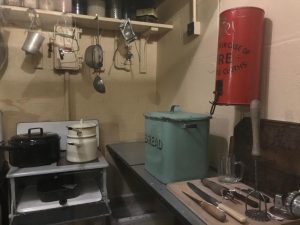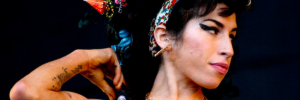The Tango Tea Boom: A Dance Revolution in Bloomsbury
At the onset of the 20th century, dance emerged as a thriving interest across Europe and the United States. The Argentine tango, in particular, shook the world with its passionate allure. In London, this fascination birthed the unique trend of tango teas. These afternoon events, set in the city’s most fashionable locales, pulled in a diverse crowd and piqued public interest. This article delves into the vibrant world of London’s tango teas in 1912, exploring the places, people, and societal views that surrounded these mesmerising occasions.
Tango teas unfolded in a variety of locations throughout London, including luxurious hotels, restaurants, and clubs. The likes of the Savoy Hotel, the Criterion, and the Piccadilly Hotel stand out as popular spots for these events. These venues furnished an elegant stage for the afternoon dances, creating a refined and sophisticated setting for tango enthusiasts.
Various individuals and organisations orchestrated the tango teas. Dance instructors, event promoters, and the venues themselves were among the organisers. Capitalising on the growing craze for the tango, they saw tango teas as a chance to generate buzz and draw in a new clientele.
Tango teas attracted a mixed crowd, from London’s high society to its rising middle class. These events offered a unique space for people from varied backgrounds to mingle and socialise, blurring the conventional lines that had once divided London’s social scene.
The tango teas drew in many enthusiasts eager to learn the latest dance fad in a laid-back, friendly setting. For others, these events were a chance to network, forge new friendships, or simply revel in a stylish afternoon out.
Public Perception and Tango Teas
Tango teas sparked a great deal of curiosity and interest among the wider public. Newspapers and magazines often covered these events with a blend of fascination and gentle criticism. The close embrace and sensual movements of the tango led some to view the dance as scandalous and risqué, raising concerns about the moral implications of such events.
Yet, despite these reservations, tango teas were largely perceived as an exciting and glamorous facet of London’s social scene. For many, these events offered an exciting deviation from more formal dances, providing a peek into a world filled with passion and exoticism.
Tango teas typically offered an array of light refreshments. Finger sandwiches, cakes, pastries, and tea were common offerings. For those who wished to indulge, champagne and other alcoholic beverages were often available.
Participants at tango teas dressed to impress. Women sported fashionable afternoon dresses and elaborate hats, while men chose smart suits and polished shoes. The dramatic movements and close embrace of the tango called for a certain level of sartorial elegance, with attendees eager to impress their fellow dancers.
Learning the Tango and the Art of Dance Etiquette
Many tango tea attendees were keen to learn the dance. Professional instructors were often present to provide guidance and coaching. The informal nature of the events allowed beginners to practice their moves and gain confidence, while seasoned dancers could perfect their technique and showcase their skills.
Dancing was not mandatory at tango teas. Guests were free to watch the dancers if they preferred. However, the energetic and contagious atmosphere often inspired even the most reluctant attendees to try the tango. The etiquette of the time dictated that men should courteously invite women to dance, and it was considered impolite to decline an invitation without a good reason.

Tango teas in 1912 London offered a unique setting for socialization and dance, more casual than traditional balls or formal dances. Consequently, they promoted a sense of camaraderie and mutual enjoyment among attendees, emphasizing the joy of dance and companionship.
Tango teas turned into a vibrant social space where the love for dance reigned supreme. The atmosphere was relaxed, encouraging both novices and experienced dancers to participate without any reservations. While dancing was optional, most attendees were caught up in the thrilling environment and took a spin on the dance floor.
The diversity of the crowd fostered a unique sense of community. Despite the different social backgrounds of the attendees, the shared love for tango helped them find common ground. This breaking down of social barriers became a signature of these tango teas.
Tango Teas: The Blend of Glamour and Excitement
Tango teas were a captivating amalgamation of glamour, thrill, and sociability. The allure of the tango, coupled with the elegant settings and the opportunity to socialize, made these events unforgettable for those who attended.
From the fashionable outfits of the attendees to the exotic moves of the tango, every aspect of these events was imbued with a sense of style and sophistication. The presence of dance instructors added an educational aspect, making tango teas not just a social event, but a learning experience.
As a cultural phenomenon, tango teas mirrored the rapidly changing social landscape of early 20th-century London. They signified the city’s growing interest in new forms of entertainment and self-expression.
The events sparked lively debates about the boundaries of propriety and the appeal of the exotic. Even though the tango was seen as scandalous by some, the enthusiasm for these events suggested a societal shift towards a more liberal and accepting view of such expressions.
The tango teas of 1912 offers a fascinating insight into a past era. They serve as a window into the tastes, fashions, and passions that defined this pivotal moment in British dance and culture. The popularity of these events also speaks to the timeless appeal of dance as a form of expression and connection. Whether it’s 1912 or today, the joy and passion evoked by dancing remain the same.
They were, therefore, not just a fleeting trend. They marked a significant shift in London’s social scene, pushing the boundaries of traditional norms and paving the way for new forms of expression. Even a century later, the influence of these events continues to resonate, reminding us of the power of dance in bridging social gaps and sparking cultural conversations.




